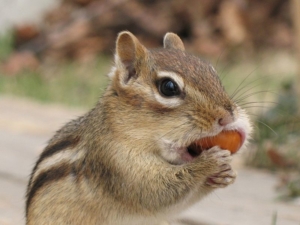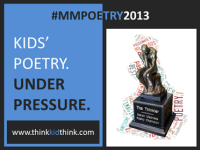
Two Original Limericks:
There once was a boy with a stick
Who wanted to try a cool trick.
He threw the stick up,
Held his hands like a cup
And grasped the fine point of the stick.
There once was a girl who loved rhyme.
She rhymed when she talked all the time.
Her friends grew to hate
This maddening trait
And prompted her interest in mime.
Why Limericks?
A few weeks ago I wrote about why I think we could all benefit from spending some time reading and writing haiku. This week I want to advocate for a very different form—the limerick.
Here’s why I think kids, and their grown-ups, should study and write limericks:
1. Limericks are funny.
2. Limericks have a strong, easily identifiable rhyme and meter.
3. Because of #1 and #2, limericks provide a perfect jumping off point for the study of rhyme and meter.
Lately, I feel like I’m reading more warnings against writing in rhyme and meter and even against teaching children to write in rhyme and meter because it’s so hard. It is hard. Often the difference between an excellent poem and a poem that makes you wince is the rhyme and/or meter. Rhyme and meter are basic elements of poetry, music, language, and humor. We can’t give up! We need to study and practice and work. Limericks provide a great opportunity to do that work, while also having fun.
For anyone who’s interested, here’s one possible approach to teaching the limerick:
1. Read a limerick out loud and have the kids read it out loud multiple times, until they can nearly sing it by heart.
(Be sure the example follows the rules of the form very closely.)
Here’s a classic by Edward Lear:
There once was a man with a beard
Who said, “It is just as I feared!
Two Owls and a Hen,
Four Larks and a Wren,
Have all built their nests in my beard!”
2. Work with the kids to rewrite the limerick in nonsense syllables like da and DUM: da for the unstressed syllables, DUM for the stressed syllables. Have them chant this a few times too.
da DUM da da DUM da da DUM
da DUM da da DUM da da DUM
da DUM da da DUM
da DUM da da DUM
da DUM da da DUM da da DUM
You could at this point talk about variations in the form, such as:
da DUM da da DUM da da DUM
da DUM da da DUM da da DUM
da da DUM da da DUM
da da DUM da da DUM
da DUM da da DUM da da DUM
Or:
da DUM da da DUM da da DUM da
da DUM da da DUM da da DUM da
da DUM da da DUM
da DUM da da DUM
da DUM da da DUM da da DUM da
You could also show them how people typically mark meter—with ˘ and ‘
As in
˘ ˘ ´ ˘ ˘ ´ ˘ ˘ ´
˘ ˘ ´ ˘ ˘ ´ ˘ ˘ ´
˘ ´ ˘ ˘ ´
˘ ´ ˘ ˘ ´
˘ ˘ ´ ˘ ˘ ´ ˘ ˘ ´
(For information about how to make these symbols on a mac go to ChrisWrites.com.)
3. Show the kids a different version of the same limerick that disrupts the rhyme:
For example, with apologies to Mr. Lear:
There once was a man with a beard
Who said, “It is just as I dreaded!
Two Owls and a Hen,
Four Larks and a Jay,
Have all built their nests in my hair!”
What’s wrong with this version?
You might want to mention that Lear’s limericks often use the same word at the end of the first line and at the end of the last line. Sometimes contemporary readers don’t seem to feel comfortable with this rhyming of the word with itself.
4. Show the kids another version that disrupts the meter:
For example, again with apologies to Mr. Lear,
Once there was a man with a beard
Who exclaimed, “It is exactly as I feared!
Owls and white Hens,
Twenty-one Larks and Wrens,
Made nests in my long beard!”
What’s wrong with this version?
I think that by comparing this version to Lear’s, kids can see for themselves the importance of getting the meter right.
5. Give the kids another messed up limerick.
Here’s another Lear limerick I’ve taken the liberty of ruining:
Once there was a Young Lady of London,
Whose shoelaces were almost never untied.
She bought some clogs,
And some tiny spotted cats,
And frequently galloped about Ryde.
Can they fix it (alone, in pairs, or as a class)?
Here’s the original:
There was a Young Lady of Ryde,
Whose shoe-strings were seldom untied.
She purchased some clogs,
And some small spotted dogs,
And frequently walked about Ryde.
6. Finally, ask them to write their own limerick. I think it’s important to mention that it’s harder than it sounds. I would also provide opportunities to get help—either from partners or the whole group. And as always, when I ask kids to write, I write. I want them to see that I’m willing to take on all the risks and challenges I ask them to take on. Often I’m the very first to ask for help.
For more Poetry Friday, visit Laura Salas at Writing the World for Kids.
Next week, Poetry Friday will be here!
© Elizabeth Steinglass, 2013, all rights reserved











